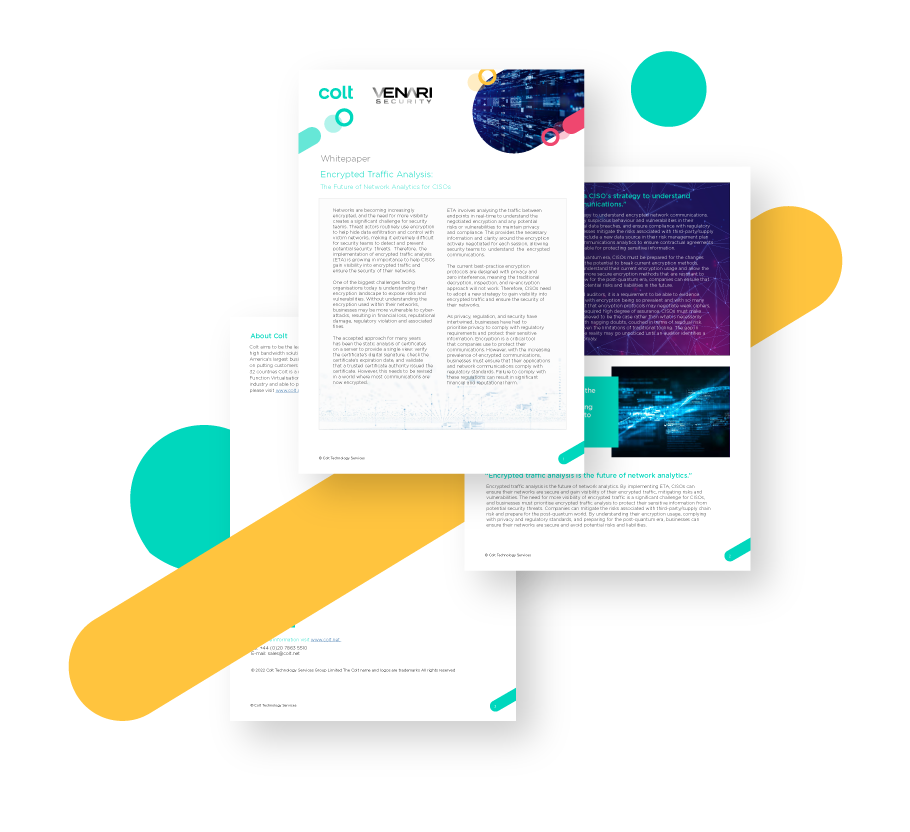| 15 min read
What is Hybrid Cloud?
Hybrid cloud is rapidly becoming the cloud model of choice for organisations seeking the best of all worlds. But if a hybrid or multi-cloud deployment is not supported by the right connectivity, then a poor experience can result and expected dividends fail to materialise.

On this page:
Hybrid Cloud explained
Growing market, growing challenges.
Enterprises continue to move essential applications and workloads to the cloud at a rapid rate. But as the cloud market develops, and embraces a growing number of mission critical functions, it becomes more of a priority than ever for enterprises to manage the concerns and risks that a cloud migration can represent.
With many enterprises now adopting a hybrid or multi-cloud model as a way to spread risk and maximise the dividends of a cloud move, it is more important than ever that they choose the right connectivity partner to underpin their cloud strategy and make the dynamic interconnection of multiple end points as seamless and reliable as possible.
If a move to the cloud is to be a positive experience, then it must be backed by a future-proofed fibre network that has direct connectivity around the globe into the key data centres where the cloud resides. Only this kind of network can support an enterprise’s digital transformation and give them the guaranteed up-time and maximum agility that they need to compete.
But a great cloud experience is about more than just a great network. It’s about an accompanying level of service that goes the extra distance to maximise your productivity and minimise your exposure to risk, complexity and uncertainty.
Not only is cloud overtaking more traditional ways of delivering compute services, it is significant that hybrid cloud - the combined use of both public and private cloud resources as part of a overall cloud strategy - is on track to become the dominant cloud model.
1. The drivers of hybrid cloud
So what are the drivers behind the hybird cloud model? Here are some common use cases:
The setting up of a private cloud, running either on inhouse server architecture or provisioned out of dedicated data centre space over a private connection, makes sense to an enterprise that needs to keep at least some of their IT under their own control. Preference for private cloud is in some cases driven by regulatory demands that dictate how customer data can be stored, or in other instances by simple discomfort with the placing of mission critical functions in a shared data centre environment, accessible over an ordinary broadband connection. But it can be desirable and economically sensible for some IT functions – the ones not likely to be compromised by being accessed over the Internet - to reside with a public cloud service. Hence why many organisations have chosen to operate on-premise and public cloud deployments side by side.
A private cloud does not necessarily handle unexpected peaks and troughs of usage in the same way that a public cloud service such as Microsoft Azure or Amazon Web Services does. When a major scaling of resources is needed, it can be helpful to shift selected workloads from a private to a public cloud environment to meet capacity demands. This might be in response to temporary pressure, such as a spike in usage of a particular application for seasonal reasons, or perhaps be down to an unforeseen event that affects demand for a service. A hybrid cloud scenario might see most needs catered for by a private cloud environment with any spikes handled by on-demand resources from a public cloud. For cloud bursting to work necessitates secure, low-latency network connections between the different cloud environments.
Once in a while a new technology emerges that galvanises the IT world and promises to be a game changer. Every CIO will want to develop possible applications for this technology and test them prior to deployment. The hot button at the moment is artificial intelligence which has led many organisations to explore ways of automating the process of learning from data in order to improve a range of business processes. For those that want a way to test out a new AI or machine learning application, the public cloud can be a safe space to do this without having to throw capital at developing it as an inhouse capability in a private cloud environment. Once an AI application has proved itself as being of lasting benefit, then an investment can be made to bring it back on-premise.
Organisations with a global footprint may feel particularly vulnerable to the failure of services at one or other of their distributed locations. They will want a plan in place to handle any disaster and protect workloads. A hybrid cloud strategy can play a part here. The principle IT environment can be maintained in a private cloud, with a recovery environment held in the public cloud to mirror it. The public cloud environment can then be spun up in response to an emergency that threatens the private cloud. Any high availability strategy of this sort will have to rely on world class connectivity backed by dependable service levels.
2. The next dimension - a multi cloud approach
The basic hybrid cloud model has now moved into a new and more complex phase. Enterprises are increasingly going beyond a simple twin public and private deployment and opting instead for a mix of different public cloud services from different providers to run alongside their private cloud.
This naturally adds yet further to the need for the right connectivity partner to manage a potentially complicated set up and make it work dynamically and seamlessly to ensure an optimal experience. The multi-cloud model enables enterprises to separate different workloads into different cloud environments depending on their specific requirements. Fine judgements can be made about how those requirements match up with the strengths of different cloud services.
Multi-cloud saves an organisation from being locked into one cloud service provider. If you are picking and choosing which workloads to place with which service, then the power resides with you, not the service provider. It’s their job to sell the benefits of their product to you and your job to decide who offers the best value. Dividing workloads between providers can give you cost savings by letting you opt for best value, and also allow you to leverage the core strengths of different providers for particular tasks – because they certainly don’t all offer the same thing.
There can also be a security dividend. As the cloud market matures and expands to handle ever more critical tasks, so too does the attractiveness of the ecosystem increase for perpetrators of distributed denial of service (DDoS) attacks and other security perils. A well-managed multi-cloud environment minimises what you might lose should one or other cloud service fall victim to an attack. Having a single provider leaves you far less resilient in the instance of any sort of downtime, whether it is down to malice or technical failure. Far better to be able to shift the threatened load to one of the other suppliers you already have a contract with.
3. The challenges of a hybrid or multi-cloud approach
With a hybrid or multi-cloud environment comes the potential for complexity, and with complexity comes the potential for a negative experience. At the very least it is an environment that demands new approaches to IT management from CIOs. Desired benefits from public cloud, like cost savings, automated optimisation of network performance and increased security will not materialise without the right management approach.
A poorly managed hybrid or multi-cloudcenvironment can end up costing more than the model it replaces. Automation and resource utilisation can take time to get right. And security – always one of the perceived threats of a migration to the cloud – needs investment to work effectively.
Supporting a complex web of cloud services can demand skill sets that an organisation might not possess. Beyond these challenges is the obvious fact that using multiple public cloud services and wrapping that up with on-premise resources must deliver something incremental, or it is not worth doing.
4. From segregation to dynamic integration
Competing in the modern digital economy is all about is all about meeting fluctuating business needs with maximum agility. This means activating or deactivating resources according to slight shifts in patterns of demand, allowing an organisation to best serve its customer base before a competitor can get a foothold.
A hybrid or multi-cloud environment must match this need by being dynamic and fluid, not static with resources isolated in their own siloes. Workloads must be able to switch when required from data centre to data centre, from service provider to service provider, from on-premise server to public cloud and back again, all without loss of service.
It’s an approach that will only work if there is dynamic integration between the different elements. The different aspects of a complex cloud strategy must not be managed in isolation, but integrated into something that is potentially much greater than the sum of its parts. Early private cloud deployments tended to be strictly segregated from applications running in the public cloud, but the future of hybrid cloud computing must do away totally with this separation, enabling the dynamic distribution of applications and databases across multiple environments.
5. Why your network is the key
In this scenario, it easy to understand how the success of a hybrid or multi-cloud strategy model is in a large measure down to the quality of the network that underpins it. Any cloud adoption or digital strategy will either sink or swim on its connectivity, none more so than a hybrid one with its volatile traffic patterns and peaks and troughs of demand.
A network must deliver seamless communication between public and private cloud environments, and facilitate the movement of virtual machines or databases between multiple data centres. The right network will be able to respond to the most dynamic of patterns, distributing workloads as uniformly as possible across a complex web of infrastructures in the most economical way. The right network will allow an organisation not only to minimise costs and maximise efficiencies, but also to deliver the best possible experience for their employees so that they in turn can deliver the best results for the customer.
Traditional enterprise network service providers will have to transform their platforms and services to stay relevant and competitive in the cloud computing era. Better to choose a networking partner that has already made this transition and is thus well placed to offer customers a superior cloud networking experience.
With a hybrid cloud and multi cloud strategy necessitating a complex web of partnerships and interconnections, it’s better to find a partner that already has links in place between their network and the cloud provider ecosystem. The ideal network will reach as directly as possible from an organisation’s end points to the all the major data centres and colocation points, in other words the locations where the main public cloud platforms reside.
In a globalised economy, enterprises need reach into data centres in all corners of the world. A global IT strategy is only as strong as the quality and reliability of the global interconnections that enable it. But arranging multi country connectivity and contracts can be slow, costly, complex and inflexible. Better then to have a network partner that can care of it all for you.
It should be fast and easy to interconnect the data centres that host your cloud services, even if they are in different cities, countries or continents. Only then can your business-critical IT services work together seamlessly, regardless of location.
The right network will also offer private connectivity from data centre to office, so as to reduce network costs, increase bandwidth throughput, and provide a more consistent network experience than pure Internet-based connections.
A modern network should also offer the ease of doing business that an organisation would expect from a cloud service provider. Networking services should be available on-demand in real time, and paid for according to use and not up front in the form of a long term commitment. A network service that matches the benefits of the cloud will be geared to providing a great cloud experience end to end.
Not all networks offer the same experience
While networks can be similar to each other at a basic level, it’s only a network with a truly resilient design that can switch you over to a different route so that you don’t notice when problems occur. You need a partner that can deal with any issues quickly, keeping in better contact with you throughout, responding to your needs, and showing imagination and going the extra yard in giving you the best and most consistent service.
Enterprises that move to the cloud often do not have large in house IT resources. This makes it extra valuable that they have a partner to help them specify exactly what they need to make a cloud strategy function. It must be a partner that can translate an enterprise’s very specific and individual needs into the right connectivity solution for their needs. Connectivity needs to be right from the start to ensure that a cloud strategy ends in a good experience.
You should not notice as workloads switch from cloud provider to cloud provider. It should be seamless. Global connectivity that works to the same standard anywhere in the world will make a difference here.
If you are taking what feels like a risky bet on a cloud move, giving away control of at least some of your core systems, you need a partner who will be trying hardest to derisk that bet and make it all work for you.

Stay secure beyond borders
A guide to SASE implementation
With employees working remotely and critical systems moving to the cloud, traditional network perimeters have exploded and businesses need to stay secure beyond borders to enable success. Download the free guide to discover a guide to SASE implementation, to help you find the right pathway for your business.
Glossary
Public Cloud
A cloud model whereby organisations purchase computing services offered by a cloud services provider (such as Microsoft Azure or Amazon Web Services) and access them over the Internet. One of the key strengths of the public cloud model is that it can save organisations from the cost of owning and operating their own server infrastructure and paying for software licences. Public cloud services are provided to multiple customers out of shared infrastructure.
Private Cloud
A cloud model whereby organisations access computing services that are provisioned over infrastructure that is dedicated to their exclusive use. That infrastructure may reside in a remote data centre, or on the organisation’s own premises. The popularity of the model comes from the greater levels of control, customisation and security than is offered by taking the public cloud route.
Multi-Cloud
A cloud model whereby use is made or more than one public cloud service, perhaps combined with certain functions being retained in-house on a private cloud as well. A typical split would be taking infrastructure-as-a-service from one public cloud provider and software-as-a-service from another, thereby spreading the load according to where specialisms are seen to lie. The popularity of the model is that it maximises choice and flexibility and spreads risk.
Hybrid Cloud
Hybrid cloud is a cloud computing model that combines the use of private and public cloud models under one unified cloud strategy. It is customary for there to be a degree of orchestration between the two models so that workloads can be switched between them if necessary. The popularity of the model is that it offers a compromise between having to commit to one model or the other.

Stay secure beyond borders
A guide to SASE implementation
With employees working remotely and critical systems moving to the cloud, traditional network perimeters have exploded and businesses need to stay secure beyond borders to enable success. Download the free guide to discover a guide to SASE implementation, to help you find the right pathway for your business.




